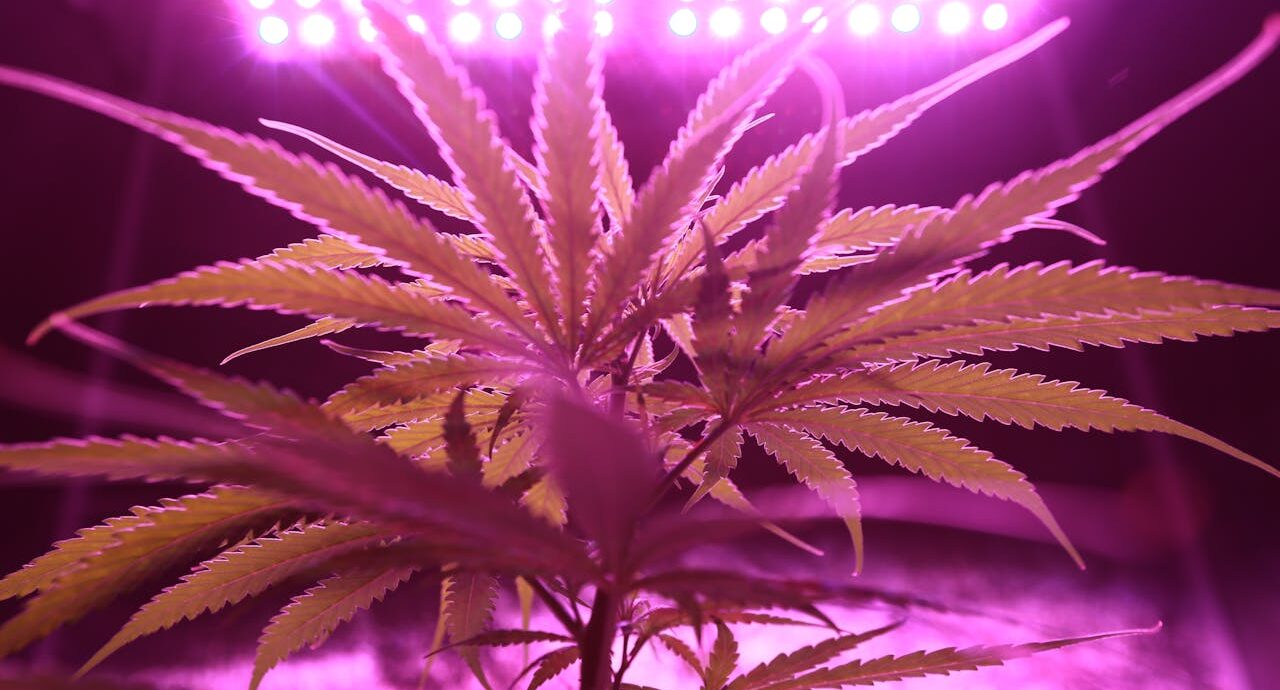Introduction to Hindu Kush Autoflowering
Hindu Kush Autoflowering is a prominent cannabis strain that holds a significant place in both the history of marijuana cultivation and the hearts of growers around the world. Originating from the rugged mountainous regions of Afghanistan and Pakistan, it is celebrated for its pure Indica lineage, resulting in traits that are highly sought after in the cannabis community. This strain’s unique historical roots not only contribute to its rich genetic profile but also enhance its appeal among enthusiasts and growers alike.
One of the primary factors that elevate Hindu Kush Autoflowering as a favored choice among cultivators is its robust growth characteristics. This strain is particularly known for its short stature, bushy structure, and resilience in various growing conditions, making it ideal for both indoor and outdoor cultivation. Autoflowering genetics mean that growers do not need to adjust lighting schedules; instead, the plant automatically transitions from the vegetative stage to the flowering stage regardless of light exposure. This feature simplifies the cultivation process significantly, making it a perfect option for novice growers as well as seasoned cultivators looking for a low-maintenance strain.
Furthermore, Hindu Kush Autoflowering carries a dense layer of resinous trichomes, which is indicative of its potent effects and high THC levels. The aroma encapsulates earthy and pine notes, while the flavor profile tends to embody a rich, spicy essence, providing a satisfying experience to those who indulge. As a strain revered for both its easy cultivation and unique sensory palette, learning how to grow Hindu Kush Autoflowering offers a rewarding venture that aligns with the needs of various growers. Its enduring popularity and robust nature make it a must-try for anyone exploring the world of cannabis cultivation.
Understanding Autoflowering Cannabis
Autoflowering cannabis plants represent a significant shift in the cultivation of cannabis, primarily due to their unique flowering mechanism. Unlike photoperiod strains, which require specific light cycles to induce flowering, autoflowering varieties automatically transition from the vegetative stage to flowering based on their age rather than light exposure. This inherent trait is a result of their genetic lineage, primarily derived from Cannabis ruderalis, a subspecies known for its ability to flower in shorter daylight conditions.
The science behind photoperiodicity involves the plant’s response to light cues, where a change from long days to shorter days triggers flowering in traditional strains. In contrast, autoflowering strains, like Hindu Kush autoflowering, completely bypass this requirement, allowing growers to cultivate them in various environments and schedules without being bound to specific light regimes. This characteristic not only simplifies the growing process but also enhances the possibilities for growers with limited indoor setups or those looking to maximize outdoor yields within shorter growing seasons.
The advantages of growing autoflowering strains are numerous. Primarily, they tend to have a quicker turnaround time, allowing for multiple harvests in a single growing season. Additionally, these plants are often more resilient to pests and environmental stresses, making them suitable for novice and experienced growers alike. Hindu Kush autoflowering, with its robust genetics, offers an exceptional flavor profile and potency, thus serving as an ideal choice for those exploring this category of cannabis cultivation.
Overall, understanding the distinction between autoflowering and photoperiod cannabis is crucial for any grower aiming to create a productive garden. By recognizing the unique characteristics and benefits of autoflowering strains such as Hindu Kush, cultivators can enhance their gardening strategies and outcomes.
Choosing the Right Growing Environment
Creating an optimal growing environment is crucial for successfully cultivating Hindu Kush Autoflowering cannabis. This strain, known for its resilience and robust characteristics, thrives best under specific conditions that enhance its growth potential and yield.
When considering indoor cultivation, lighting plays a pivotal role. High-quality grow lights, such as LED or HPS systems, should be implemented to provide adequate illumination. It is recommended to maintain a light cycle of 18 hours on and 6 hours off during the vegetative stage, transitioning to a 12 hours on and 12 hours off cycle as the plants approach flowering. Moreover, keeping the temperature between 68°F to 77°F (20°C to 25°C) ensures that the plants not only grow vigorously but also remain healthy. Use of thermostats and hygrometers can help monitor these crucial parameters effectively.
Humidity is another essential factor. During the seedling stage, a humidity level of approximately 70-75% aids in faster germination and root development. As the plants mature, gradually lowering the humidity to 40-50% will help prevent mold and mildew, particularly in the flowering stage when buds are most vulnerable. Additionally, sufficient air circulation must be established within the growing space to prevent stagnant air and promote healthy transpiration.
For outdoor gardening, selecting a location that receives ample sunlight—ideally 8 to 10 hours per day—is vital to maximize growth. The climate should be moderately warm, as Hindu Kush Autoflowering varieties perform best in temperatures ranging from 65°F to 80°F (18°C to 27°C). Furthermore, ensuring that the plants are planted in well-draining soil will promote water retention and nutrient absorption, critical factors that contribute to the overall health and yield of the plants.
By thoughtfully considering these environmental variables, cultivators can significantly enhance their experience in growing Hindu Kush Autoflowering, leading to a more fruitful and satisfying yield.
Soil and Nutrients: Feeding Your Plants
The foundation of a successful cultivation experience lies in the quality of soil and the nutrients provided to your plants. When growing Hindu Kush autoflowering strains, selecting the right soil mix is essential for optimizing growth and enhancing yields. A well-draining soil rich in organic matter is often recommended, as it allows for adequate oxygen flow to the roots while retaining moisture. Soil blends that include components such as peat moss, perlite, and vermiculite can provide an ideal environment for these plants. Such mixtures not only support root health but also help in preventing over-watering, a common cause of problems in cannabis growing.
Nutrient management is equally critical for the healthy development of Hindu Kush autoflowering plants. During the vegetative stage, your plants will require a balanced mix of nitrogen, phosphorus, and potassium—often referred to as NPK. Nitrogen is vital for leaf development, while phosphorus promotes strong root growth. In the flowering stage, these ratios will shift, with a greater emphasis on phosphorus and potassium to facilitate flower formation and nutrient uptake. Additionally, calcium and magnesium play essential roles in preventing deficiencies that can hinder growth and flowering.
When it comes to fertilization, there are a few key tips to keep in mind. Start with a lower concentration of nutrients and monitor your plants closely for signs of over-fertilization, such as leaf burn or discoloration. Gradually increase the nutrient levels as the plants mature, particularly as they transition into the blooming phase. Utilizing organic fertilizers can also benefit the soil’s microbial life, which in turn helps in nutrient uptake, supporting the overall health of your Hindu Kush autoflowering plants. By understanding and applying these principles of soil quality and nutrient management, growers can ensure robust plant growth and maximize their yield potential.
Germination and Seedling Stage
The germination and seedling stages are crucial for successfully cultivating Hindu Kush Autoflowering cannabis. Proper management during these early phases can greatly influence the plant’s overall growth and health. To initiate the germination process, begin by placing your seeds in a damp paper towel or directly in the soil. Keep the environment warm and humid, ideally between 70-80°F (21-27°C). This will encourage the seeds to sprout. Within a few days, you should start to see signs of sprouting as the taproot emerges. It is important to handle the seeds gently during this period to avoid damaging them.
Once the seeds have germinated, the next step involves transferring them to a growing medium. Hindu Kush Autoflowering plants thrive in well-draining soil, enriched with organic matter. A light mix of soil and perlite can enhance drainage and oxygen flow to the roots. When it comes to watering, ensure that the soil is moist but not soggy. Overwatering can hinder root development and lead to problems such as root rot. A good practice is to monitor the moisture level of the soil, allowing it to dry slightly before the next watering.
As the seedlings begin to develop, provide them with adequate light. Autoflowering strains like Hindu Kush can benefit from 18-24 hours of light per day in the vegetative stage. LED or fluorescent grow lights are excellent options, as they produce less heat, lowering the risk of overheating your young plants. During this critical seedling phase, it is essential to observe for any signs of distress, such as yellowing leaves or stunted growth. Addressing any issues promptly can help ensure that your journey into growing Hindu Kush Autoflowering progresses smoothly, setting a strong foundation for the subsequent growth stages.
Vegetative Growth and Training Techniques
The vegetative growth phase is a critical stage for Hindu Kush Autoflowering plants, as it lays the foundation for healthy development and robust yields. During this period, the emphasis should be on providing optimal light conditions, as these plants require a well-balanced light spectrum to thrive. Ideally, growers should expose their plants to 18-24 hours of light each day, utilizing high-quality LED or fluorescent grow lights to simulate natural sunlight. Proper lighting not only promotes lush foliage but also supports the plants’ overall health, enabling them to absorb essential nutrients and moisture effectively.
In addition to an adequate light supply, regular monitoring of plant care is paramount. Growers should observe the plants for any signs of deficiencies or diseases, as early detection can prevent significant setbacks. Ensuring that the plants receive the right nutrients, in appropriate quantities, is essential. A balanced nutrient solution tailored for autoflowering strains can significantly enhance the vegetative growth phase, promoting stronger stems and faster growth rates. Additionally, maintaining adequate humidity and temperature levels is crucial for optimal development.
To further enhance yields and manage plant size during the vegetative phase, various training techniques can be employed. Low-stress training (LST) is a popular method that involves gently bending and securing branches to allow more light penetration to lower nodes. This technique can promote lateral growth, increasing overall yield without putting the plants under undue stress. Alternatively, topping can be employed, which involves cutting the primary stem to encourage the growth of multiple main colas. However, care must be taken when employing these methods, especially with autoflowering varieties like Hindu Kush, as excessive stress can negatively impact flowering time and yield. Properly executed training methods can help growers maximize their harvest while maintaining healthy plants throughout the vegetative phase.
Flowering Stage: What to Expect
The flowering stage of Hindu Kush autoflowering cannabis plants marks a significant transition in the growth cycle, typically occurring around four to five weeks after germination. During this period, you can expect observable changes in the plants’ morphology. The plants will begin to develop bud sites, and the flowers will become denser and more pronounced. This stage can last anywhere from 6 to 10 weeks, with the overall time largely depending on the specific strain and growing conditions.
As the flowering progresses, it is crucial to monitor visual indicators of plant health. The color of the leaves can provide insights into the health of the plant. Ideally, the leaves should remain healthy and green; however, yellowing can indicate nutrient deficiencies. Pay close attention to any discoloration or curling, as these may signal environmental stress or pest infestations that necessitate immediate action to prevent further damage.
One of the critical aspects of managing the flowering stage is observing the trichomes, the tiny crystalline structures on the buds. These contain the plant’s cannabinoids and terpenes, influencing the overall potency and flavor of the final product. Harvest readiness is typically assessed by examining these trichomes; when they transition from clear to a milky white or cloudy appearance, it indicates peak potency. Conversely, a more amber color suggests the THC may degrade into CBN, which results in a more sedative effect.
Maintaining optimal conditions during this stage is paramount for success. A stable environment with proper humidity levels—around 40-50%—is essential to prevent mold formation, which is particularly concerning given the dense buds of Hindu Kush autoflowering plants. Additionally, ensuring appropriate light cycles, air circulation, and feeding routines can significantly influence the yield and quality of the final product. By diligently monitoring these factors, growers can optimize their flowering experience and set themselves up for a successful harvest.
Harvesting and Curing: Maximizing Flavor and Potency
Successfully harvesting and curing your Hindu Kush Autoflowering plants is crucial for enhancing the flavor and potency of the final product. Timing is paramount when determining the optimal moment to harvest. Generally, it is recommended to observe the trichomes on the buds using a magnifying glass. For best results, wait until about 70-80% of the trichomes have turned from clear to a milky white color, with a few amber ones appearing. This coloration indicates that the THC levels have peaked, providing a potent effect while preserving the unique aroma of the Hindu Kush strain.
Once you have identified the right time to harvest, begin by carefully cutting the plant at the base, being mindful to use sterile and sharp scissors or pruning shears. Take care to handle the buds gently to avoid damaging their delicate structure. It is beneficial to trim the larger fan leaves away at this stage, which will allow for better airflow during the curing process and reduce the risk of mold. However, it is advisable to leave some of the smaller sugar leaves intact, as they contribute to the overall flavor during curing.
After cutting and trimming your Hindu Kush buds, the next step is curing, which significantly enhances the overall quality of the cannabis. Begin this process by placing the trimmed buds in glass jars, ensuring they are not packed too tightly, as adequate airflow is essential. Keep the jars in a cool, dark place and open them once or twice daily for the first couple of weeks to allow moisture to escape and promote a healthy environment. Over time, this curing process will develop the distinct flavors and aromas characteristic of Hindu Kush Autoflowering, ultimately maximizing potency and offering a richer and more enjoyable cannabis experience.
Common Challenges and Troubleshooting
Growing Hindu Kush autoflowering strains can be a rewarding experience; however, it is not without its challenges. Successful cultivation requires awareness of potential issues that may arise during the growth cycle. Pests, diseases, nutrient deficiencies, and environmental stressors are among the most significant threats to a healthy crop. Addressing these challenges promptly can make a substantial difference in the outcome of your harvest.
Pest infestations are a common hurdle for cannabis growers. Spider mites, aphids, and whiteflies are notorious for attacking cannabis plants. To prevent these pests, it is advisable to regularly inspect plants for any signs of infestation. Implementing natural pest deterrents, such as neem oil, can also be beneficial. In the event of an infestation, applying insecticidal soap or introducing beneficial insects like ladybugs can help restore the balance.
Diseases pose another risk during the cultivation of Hindu Kush autoflowering plants. Fungal infections, such as powdery mildew or root rot, can quickly compromise the health of the plants. To mitigate these risks, maintaining proper airflow and humidity levels is crucial. Additionally, choosing disease-resistant strains and practicing crop rotation can prevent the recurrence of diseases in future grows.
Nutrient deficiencies can significantly affect plant growth and yield. Symptoms such as yellowing leaves or stunted growth may indicate a lack of essential nutrients. Conducting a soil test prior to planting will help identify nutrient composition and inform your feeding regimen. When cultivating Hindu Kush autoflowering, a well-balanced nutrient mix specifically formulated for autoflowering strains can yield optimal results.
Lastly, environmental stressors such as extreme temperatures or inadequate light can hinder growth. It is crucial to maintain a stable climate within the grow area. Providing ample light, nutrients, and water while protecting plants from harsh conditions is essential for successful cultivation.
By proactively addressing these common challenges and implementing effective troubleshooting strategies, you can enhance your experience and success while learning how to grow Hindu Kush autoflowering. This approach not only minimizes risks but also promotes a thriving cannabis garden.














